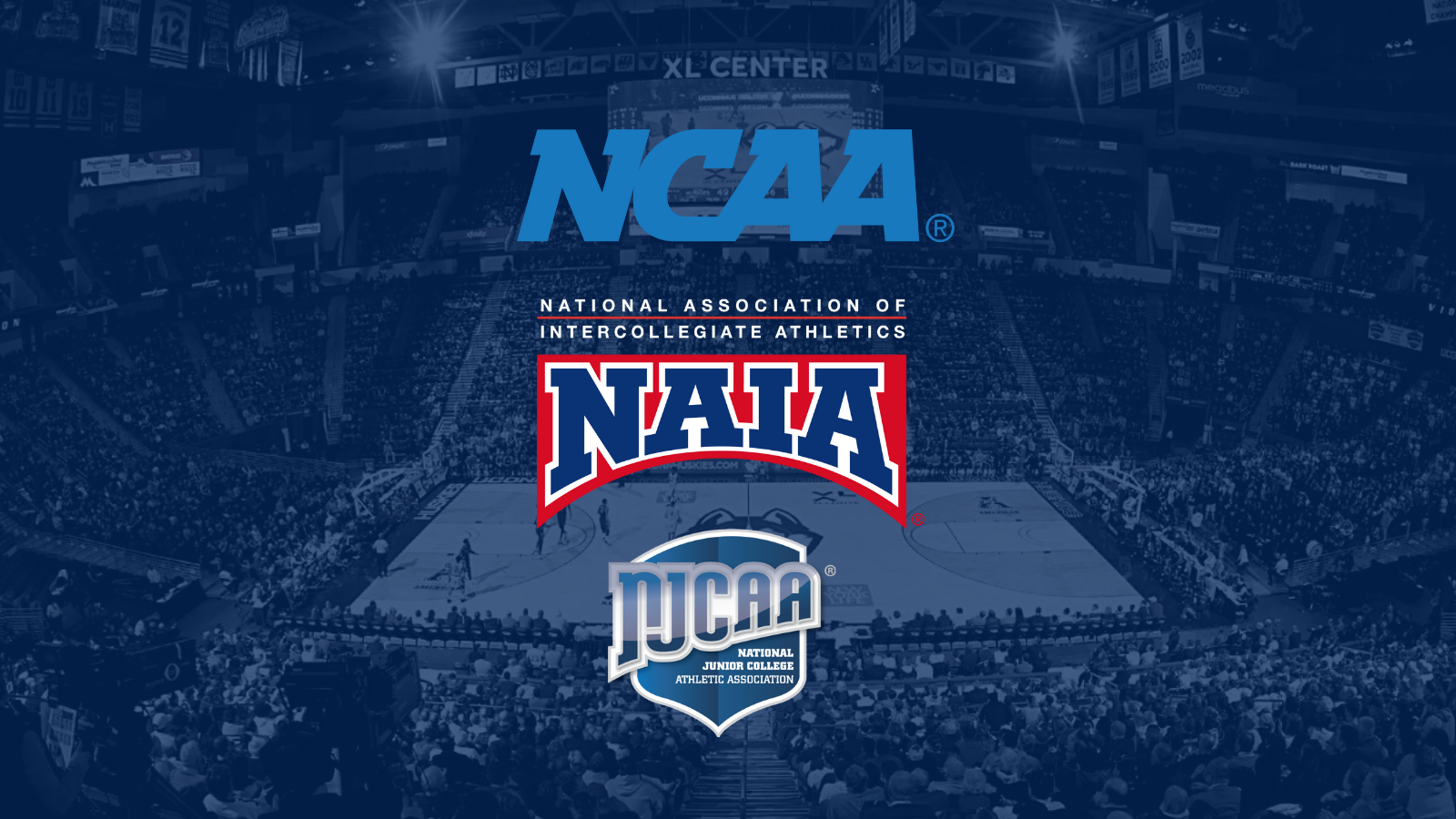As a student-athlete, choosing which college or university to play for is a big decision. One crucial factor to consider is the athletic program. There are three main organizations in college sports
Understanding each division, its purpose, and the differences between them can help you make an informed decision about your athletic future.

The NCAA, or National Collegiate Athletic Association, is the largest of the three divisions and is made up of over 1,000 member schools.
It is divided into three divisions:
• NCAA DI
Division I is the highest level of competition and includes the largest universities with the most resources and scholarships available to athletes.
• NCAA DII
Division II is designed for smaller schools that have limited resources and scholarships but still provide a high level of competition.
• NCAA DIII
Division III is the most competitive level and focuses on student-athletes competing for the love of the game rather than for scholarships or professional opportunities.
The key difference between the three divisions lies in the level of competition, resources, and scholarships available to student-athletes and the focus on amateurism in Division III.
NCAA REQUIREMENTS
NCAA WEBSITE
The National Association of Intercollegiate Athletics (NAIA) is another governing body for collegiate sports. Like the NCAA, the NAIA has member schools that offer athletic programs for student-athletes.
With 250 members (schools), the NAIA is mainly comparable to NCAA DII in terms of athletic competitiveness and size of schools. In addition, it offers full and partial athletic scholarships.
The NAIA also has a unique championship system, where eligible teams compete for a national title in their respective sport.
NAIA REQUIREMENTS
NAIA WEBSITE
The National Junior College Athletic Association (NJCAA) is a governing body that oversees and regulates athletic programs at junior colleges across the United States.
The NJCAA offers intercollegiate athletic opportunities to student-athletes pursuing a two-year degree. In addition, junior colleges are considered a stepping stone for many student-athletes who hope to transfer to a four-year institution and continue their athletic careers.
The NJCAA offers full and partial scholarships and financial aid to help student-athletes achieve their goals. In addition, many talented players are part of NJCAA programs, and travel is usually local or regional.
NJCAA REQUIREMENTS
NJCAA WEBSITE
The division levels in college sports are not strictly separated, as there is an overlap between the levels.
This means there are talented players and coaches at all levels, regardless of whether they are classified as Division 1, 2, 3, NAIA, or NJCAA.
For example, there may be Division 1 talented players at lower division levels, who have been overlooked, have academic issues, or have transferred. The competition level at each level varies, but the quality of players and coaches is not limited to just one division.
Furthermore, some players transfer from higher to lower divisions, adding to the lower-level talent pool.
Each division within the NCAA, NAIA, and NJCAA has specific requirements for student-athletes and member schools.
Review the academic requirements for each organization and division to understand which one you qualify for.
UNDERSTANDING THE REQUIREMENTS
It’s not easy to choose between the organizations and divisions. We have helped hundreds of athletes find the right place. If you need help getting a push in the right direction, contact us.